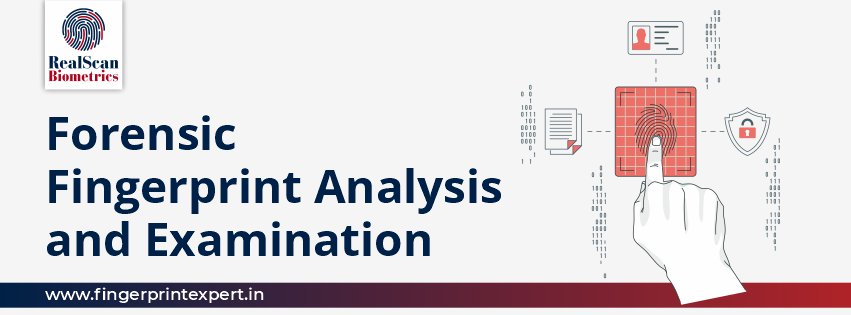We know that fingerprints are used for personal identification for more than 100 years.
It is the simplest and most inexpensive method of identification.
Fingerprints are the forensic scientist’s handiest tool to capture criminals, help law enforcement agencies and produce as evidence in court of law. Hand plays a major role in the occurrence of a crime. Hence, the chances to find fingerprint marks at the crime scene are higher than any other evidence at any type of crime scene .
Features of Fingerprints
Today, it is accepted throughout the world that fingerprints science plays a major role as evidence because of the following features:
Uniqueness: The fingerprint patterns present on the first phalange of fingertips and varying from one person to another, they are different also and unique (Kumar, 2014; Sugiura &Koseki,1998). There duplication has not been observed, and remain unchanged and maintain the individuality of an individual throughout the life.
Permanence: Throughout the life time of an individual fingerprint remain constant. Fingerprint ridges appear before birth i.e. during the third, fourth month of pregnancy and these are the last remaining feature after death of an individual. They looklike the natural identity card given to every individual.
Universal: All individuals on the earth carry this medium of identification, this makes them universal (Berry et al.,2001). A criminal always use his hands to commit any crime resulted in leaving fingermarks on the scene of crime or on any object, which come in contact with his/her fingers while committing the crime.
Inimitable: People have attempted several methods to imitate fingerprint but successful imitation of fingerprints is not reported so far. Any experienced expert can identify the forgery.
Classifiable: Fingerprints have different ridges characteristics and patterns which help the experts to systematically classify them.
Uniqueness in Twins: Twins are identical twins or fraternal twins, they share the same genetics but by taking their fingerprints you can distinguish between them.
When an expert says that two fingerprints are identical it means that both share the same pattern and similar ridges characteristics. These ridges characteristics are called minutiae. Latent fingerprints are also called hidden prints. Latent fingerprints are developed by experts at crime scene by powder method, chemical method or by using alternate light source.
Fingerprint Science Myths
Fingerprints are Forever: Fingerprints are forever but certain genetic conditions (Adermatoglyphia) and skin conditions lead to the loss or distortion of the fingerprints. Persons who are associated with tactile works, typists, clerks, individuals associated with message work, and maids, also lose their fine ridges characteristics.
DNA Fingerprinting Overshadows The Fingerprint Science: Most of the crime scenes don’t have blood and body fluids but the chances of fingerprints are more as the objects/articles had been touched by criminals during the process of crime. So fingerprints are still the most commonly found evidence at the scene of the crime.
Humans are The Only Animals With Fingerprints: Some animals like gorillas, chimpanzees and koalas have unique fingerprints. Koalas’ prints are looking similar to humans’ fingerprints.
System Does All The Work in Revealing Latent Prints: A big misconception is that the computer system (AFIS-Automated Fingerprint Identification System) does all the work but the system is automated not automatic, it’s the expert who does the work. Systems or tools have been changed but analysis always requires an experienced expert.
Professional Analysts are Highly Accurate: Fingerprint analysis is still an extremely effective tool. However, there are chances that even a highly trained fingerprint expert might commit a mistake as explained by the National Institute of Standards and Technology in its research.
Accuracy and Consistency of Forensic Latent Fingerprint Decisions: Ten-digit print patterns are of a higher quality and collected under controlled conditions by ink method on the prescribed form or digitally with the help of a live scanner system from a known subject. The latent print examination is difficult because latent prints are often unclear, distorted, smudged, contain fewer ridges, are found overlapping with other prints or appeared on complex backgrounds.
Points of Comparison Needed in Two Identical Prints to be Used in Court of Law: Fingerprint experts used a “point-counting” method that involves counting the number of similar ridge characteristics on the prints, but there is no uniform approach about how many points of similarity are needed (Mears & Day, 2002). Different countries fixed different minimum point systems/similar ridge characteristics as In India states 8 point system.
ACE-V in Fingerprint Examination
The process for latent print examination is known as ACE-V, (as analysis, comparison, evaluation, and verification).
Analysis: In this step the fingerprint and its suitable area for comparison is examined with clarity of print and other details.
Comparison: The Search print (mostly finger print and in some system palm print) compared with the listed/sample print.
Evaluation: In this step the similar or dissimilar points are evaluated in both prints.
Verification: Opinion is made by one expert and cross checked by another expertll.
Limitations of Fingerprints Examination
- There’s no assurance that the stored data will actually contain the print an investigator is looking for.
- Latent print is affected by weather conditions. When the weather is too hot the print is drowned by perspiration, when too cold, a print mark not recorded on surrounding objects, due to less moisture. Rain and wind also affect the print condition.
- During the development of print by powder method the powder can bunch and obscure ridges.
- We cannot determine when a latent print was first left on a surface. Under accurate conditions, prints can survive for an indefinite period
CONCLUSION
So, The bottom line is fingerprint science is reliable and accurate, Fingerprint identification is the most important and essential criminal investigation tool, and should continue to be used in a criminal investigation. Fingerprint science is a leader of innovation in biometrics for the last two decades and today Life.

 June 26, 2023 - BY RealScan Biometrics
June 26, 2023 - BY RealScan Biometrics
